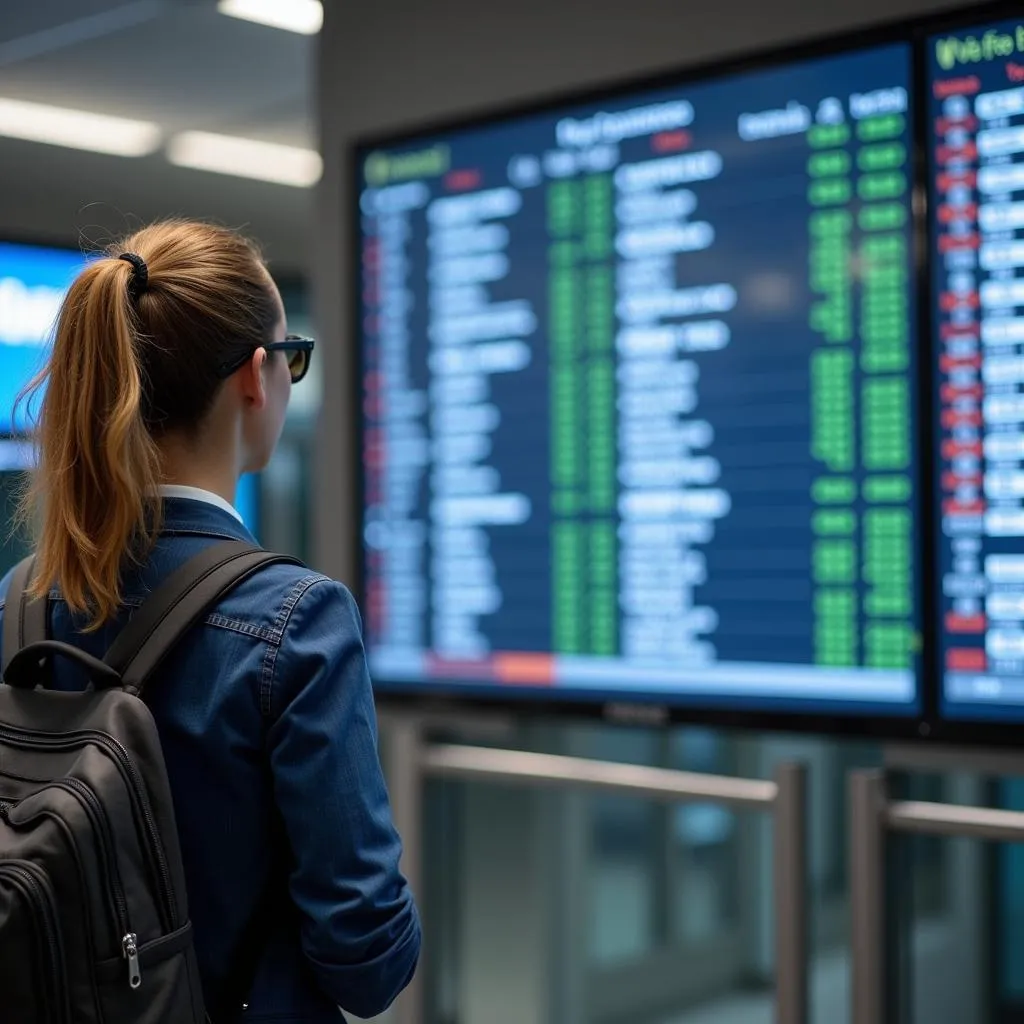New Zealand, the land of stunning landscapes and vibrant culture, boasts a network of airports connecting its diverse regions. Understanding New Zealand Airport Codes is essential for smooth travel planning, whether you’re a seasoned traveler or a first-time visitor. This comprehensive guide will equip you with the knowledge to navigate the Kiwi skies with confidence.
Decoding New Zealand Airport Codes
New Zealand airport codes are three-letter abbreviations that identify each airport within the country. These codes are standardized globally and used by airlines, travel agencies, and navigation systems. The codes are usually based on the airport’s location, but in some cases, they reflect historical or geographical factors.
Key Airports and Their Codes
Here’s a breakdown of some of the most prominent airports in New Zealand and their corresponding codes:
Auckland International Airport (AKL)
- Location: Auckland, North Island
- Status: Primary international hub
- Connections: Serving a vast network of domestic and international destinations
Queenstown Airport (ZQN)
- Location: Queenstown, South Island
- Status: Major tourist gateway
- Connections: Offering domestic flights and limited international routes
Wellington International Airport (WLG)
- Location: Wellington, North Island
- Status: Capital city airport
- Connections: Serving domestic destinations and limited international flights
Christchurch International Airport (CHC)
- Location: Christchurch, South Island
- Status: Major South Island hub
- Connections: Offering a wide range of domestic and international flights
Finding Airport Codes for Specific Locations
If you’re searching for the airport code for a specific town or city, you can use online resources like:
- Google Maps: Simply type in the name of the location, and Google Maps will display the corresponding airport and its code.
- Airport websites: Many airports have websites that clearly list their IATA codes.
- Airline websites: Most airline websites allow you to search for flights by city, automatically displaying the airport codes.
Tips for Using Airport Codes
- Double-check: Always confirm the airport code before booking flights or making travel arrangements.
- Use the correct code: Using the wrong airport code can lead to delays or missed flights.
- Check for updates: Airport codes can change, so it’s essential to verify information before traveling.
“It’s crucial to have the right airport codes on hand, especially when navigating a complex network like the one in New Zealand. A simple mistake can lead to significant disruptions,” says Dr. Jane Roberts, a renowned travel expert and seasoned flight enthusiast.
Understanding Regional Airports
While major international airports dominate the scene, New Zealand also has several regional airports serving smaller communities. These airports play a vital role in connecting rural areas and offering alternative travel options.
Key Regional Airports
- Rotorua Airport (ROT)
- Nelson Airport (NSN)
- Dunedin Airport (DUD)
- Invercargill Airport (INV)
Navigating Airport Transfers
Once you’ve arrived at a New Zealand airport, it’s essential to plan your transfer to your final destination. Here are a few common options:
- Taxis: Many airports offer readily available taxis for convenient and direct transport.
- Airport Shuttles: Shared shuttle services offer a cost-effective option, connecting you to your hotel or accommodation.
- Public Transport: Some airports have bus or train connections to nearby cities and towns.
- Rental Cars: Renting a car provides freedom to explore at your own pace.
“Navigating airport transfers can be a breeze when you have a well-thought-out plan in place,” shares Mr. David Wilson, a seasoned traveler with extensive experience exploring New Zealand.
Frequently Asked Questions (FAQs)
Q1: What does “AKL” stand for?
A1: “AKL” stands for Auckland International Airport.
Q2: Where can I find a comprehensive list of New Zealand airport codes?
A2: You can find a comprehensive list on the website of the New Zealand Civil Aviation Authority.
Q3: Are airport codes the same for domestic and international flights?
A3: Yes, airport codes remain consistent regardless of the type of flight.
Q4: What happens if I use the wrong airport code?
A4: Using the wrong code can result in booking errors, delays, or missed flights.
Q5: Are airport codes always based on the airport’s location?
A5: While many codes are based on location, some reflect historical factors or other considerations.
“Having a solid understanding of airport codes and the airport transfer options is crucial for a smooth and enjoyable trip,” adds Ms. Maria Garcia, a passionate travel blogger and experienced traveler.
Conclusion
Knowing New Zealand airport codes is an essential step towards navigating the country’s diverse and beautiful travel destinations. By using the resources and tips provided in this guide, you’ll be equipped to plan your Kiwi adventure with confidence.
 Navigating New Zealand Airports with Confidence
Navigating New Zealand Airports with Confidence
Remember, your journey begins with a thorough understanding of the destination.